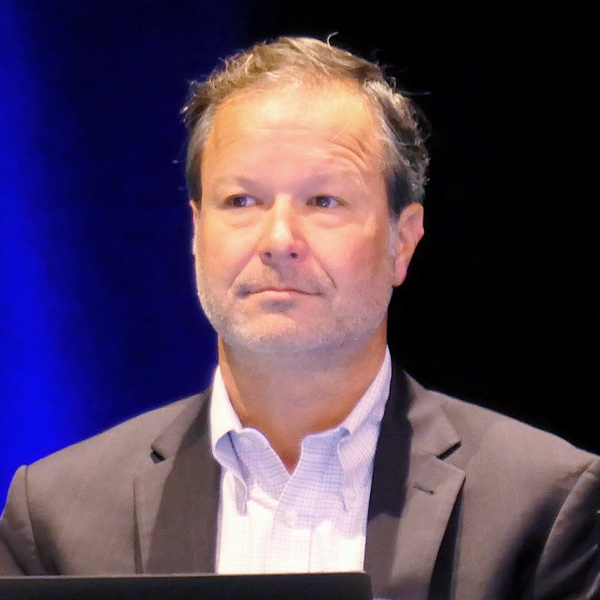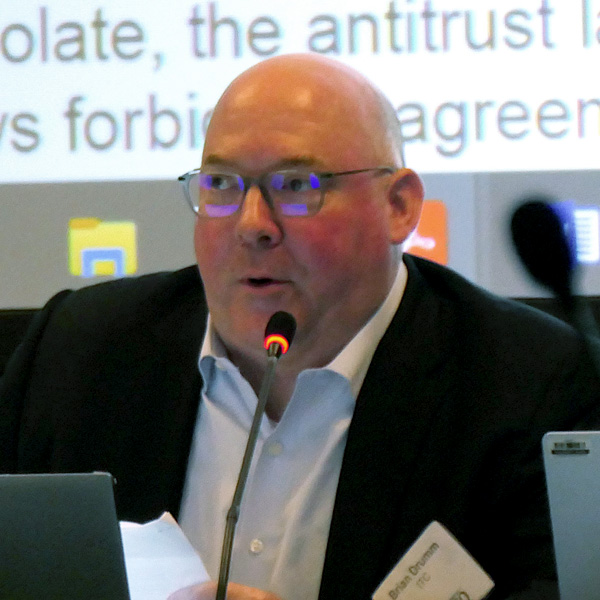Recent stakeholder comments filed with the West-Wide Governance Pathways Initiative illustrate — once again — the complexity of building the new kind of Western “regional organization” (RO) envisioned by backers of the effort.
The comments came in response to Pathways’ draft plan for the RO’s stakeholder process, an aspect of the organization likely to be as important as its governance structure in swaying some Western electricity sector participants to choose CAISO’s Extended Day-Ahead Market (EDAM) over SPP’s Markets+.
The Pathways Launch Committee floated the plan during an Aug. 28 workshop, the last of four such intensive workshops facilitated by consulting firm Gridworks to hash out ideas about how the RO would engage with its stakeholders and how the stakeholder process would tie into governance. (See No Clear Blueprint for Western ‘RO’ Stakeholder Process.)
At the heart of the proposal is the formation of a Stakeholder Representatives Committee (SRC), described as the “primary stakeholder body that works with RO staff to catalog and prioritize initiatives, as well as to define initiative problem statements and solutions.”
During the workshop to discuss the RO’s stakeholder process, Launch Committee Co-Chair Pam Sporborg, director of transmission and market services at Portland General Electric, described the SRC as an evolution of the Western Energy Imbalance Market’s (WEIM) Regional Issues Forum, which itself has evolved over time into a key stakeholder body for addressing issues related to that market.
The proposal calls for the SRC to be a sector-based body, with sectors to be “self-organized” and committee representatives selected by members of each sector.
“Sectors may elect to use selection criteria to establish diversity among SRC representatives that may be important to the sector,” a presentation accompanying the proposal states.
The proposal defines nine sectors to be represented on the SRC, including:
-
- EDAM entities (one seat);
- WEIM entities (two seats);
- CAISO participating transmission owners (2);
- transmission-dependent utilities (3), including one seat reserved for community choice aggregators;
- public interest organizations (PIOs) (1);
- consumer advocates (1);
- large commercial and industrial consumers (1);
- independent power producers, independent transmission developers and marketers (3), with assurance that IPPs and marketers each have an opportunity for a seat to represent different business models; and
- distributed energy resources (1).
One seat would be reserved for federal power marketing administrations (PMAs) in either the EDAM or WEIM sectors — if any such agency participates in those markets.
According to the proposal, every organization registered to vote in the RO would have the chance to specify their support, opposition or neutrality when the SRC votes on an issue. To be eligible to vote, an organization must register in a specific sector and agree to a code of conduct.
“Once the organizational votes are tallied, the nine sectors of the SRC will also vote, with the threshold for support, opposition or neutrality determined by the organizations in the sector,” the proposal says. “The SRC representative will report on any specific splits that have been established by that sector, consistent with the self-organizing principle described above. The results of all votes will be provided in the materials related to the issue.”
The plan also puts stakeholder initiatives into three categories, including:
-
- compliance/nondiscretionary, such as responses to FERC rulemakings or fixes to market design flaws that require tariff changes;
- compliance with state and local public policy, which could require stakeholder discussion to determine whether a tariff change is needed; and
- discretionary initiatives that can be advanced by any stakeholder, the states committee, market monitor, “independent market adviser” or RO staff.
Once initiatives are categorized, the stakeholder process would entail prioritizing them through a “roadmap” process. That would be followed by an “issue evaluation” to determine the nature of the problem to be solved (Stage 1) and an “identification of solutions” (Stage 2). The last step would be seeking approval by the RO board.
Dilution Concern
The Pathways Launch Committee received 22 comments on the proposal, including one combining responses from seven PIOs.
Other commenters included utilities (some jointly filing), large energy consumers, industry interest groups, an energy trader, the Bonneville Power Administration and Google.
In its comments, Black Hills Power expressed concern the SRC “does not provide sufficient representation to utilities, which play a critical role in ensuring grid reliability and managing market operations.”
The South Dakota-based utility is one of two Black Hills Energy subsidiaries that last month said it would pull out of SPP’s Western Energy Imbalance Service and join CAISO’s Western Energy Imbalance Market, although it made no commitment to EDAM. (See CAISO’s WEIM Plucks Black Hills Utilities from SPP’s WEIS.)
“We recognize that all registered utilities within a sector, including utilities, can vote and contribute to the sector’s overall vote,” Black Hills wrote. “However, we still have concerns that utilities’ votes will be diluted within sectors where there are diverse participants.”
Black Hills recommended that Pathways ensure utilities have “a formal mechanism for ensuring that their interests are not overshadowed by other entities within the sector.” It proposed a “more tailored sector designation for utilities” with “clear distinctions” among the types of utilities — such as investor-owned or publicly run — “to ensure that their unique perspectives are not lost within larger, more diverse sectors.”
NV Energy, which already has committed to joining the EDAM, said it supported the use of a sector-based process only for selection of the RO board and development of the annual roadmap to prioritize RO initiatives.
“While recognizing potential benefits of indicative votes, NV Energy does not believe the sector-based process proposed in the draft discussion paper is the best approach,” the utility wrote.
Instead, NV Energy “strongly supports” the indicative voting approach CAISO used in the recent stakeholder process for Pathways Step 1 — which granted the Western Energy Markets (WEM) Governing Body “primary” authority over matters related to the WEIM and EDAM. (See CAISO, WEM Boards Approve Pathways ‘Step 1’ Plan.)
In that situation, the utility noted, the ISO “simply added a voting request to the stakeholder comment template asking if the participant supports, opposes or was neutral to the proposal. The votes were then tabulated and presented to the WEM Governing Body and the CAISO Board of Governors to assist in their deliberations.”
NV Energy said that approach “provides far greater transparency” because it:
-
- records and presents each specific vote, preventing intra-sector disagreements over an initiative from being concealed by the sector’s majority vote;
- “better represents minority interests and reduces a feeling of disenfranchisement” among entities holding a minority position within a sector; and
- “reduces the burdensome and time-consuming process for separate sector-led votes.”
The utility also recommended a second seat for EDAM entities and questioned the need for three seats for transmission-dependent utilities.
“Presumably, these are transmission-dependent utilities within the EIM/EDAM footprint,” the utility wrote. “If one seat is for a transmission-dependent utility within California and one for a transmission-dependent utility outside of California, it may be understandable but does seem to create a mismatch with the three seats being allotted to the total of EIM and EDAM entities.”
‘Ambiguities’ or ‘Right Balance’
Salt River Project (SRP) said it “generally supports” creation of a “parent committee,” such as the SRC, “through which issues flow both up to the regional organization board and down to working groups.”
“This structure ensures that topics are defined at a high level based on stakeholder input before being remanded down to the working groups/task forces,” it wrote.
But SRP also recommended changing the proposed composition of the SRC to match that of the Western Resource Adequacy Program’s Nominating Committee, which consists of representatives from investor-owned utilities (2), consumer-owned utilities (2), retail competition load-responsible entities (1), PMAs (1), independent power producers/marketers (1), PIOs (1), retail customer advocacy groups (1), industrial customer advocacy groups (1) and one “independent sector” representative for entities that don’t fit into any other category.
SRP also agreed with the proposal that RO staff should take on most of the “burden” of facilitating and administering the stakeholder process, saying the arrangement would allow stakeholders to participate “nimbly” regardless of their staffing levels.
Google offered no comment on the list of proposed SRC sectors but recommended each sector develop a manual of board-approved bylaws to define who could be a member of the sector, frequency of meetings, how it develops consensus and how it communicates its positions to the RO’s committees, staff and board.
“This structure would mirror MISO’s, where sectors are self-organizing but each sector’s bylaws are approved by the board,” the company wrote.
BPA requested one additional seat be reserved for PMAs in either the WEIM or EDAM sector, assuming a PMA is a member of either. In the case of no PMA participation in either market, the agency asked that an additional seat be reserved for PMAs in the transmission-dependent utilities sector given their transmission still would be used to deliver to load in the CAISO-run markets.
BPA said it supports the concept of a category for state and local public policy stakeholder initiatives, but it also wants federal obligations that may be statutory requirements for itself and the Western Area Power Administration to be added to the category.
“In implementing the process, it will be important to ensure that these initiatives only skip Stage 1 in situations where the problem statement has broad agreement or is so clearly defined by the state policy initiative that there is no room for discussion,” BPA wrote.
The California Large Energy Consumers Association (CLECA) commented on “the imbalance between buyers and sellers in SRC voting sector definitions and encourages efforts to establish commensurate supply and demand representation.” CLECA called for the Launch Committee to address the “imbalance” by providing each sector with two seats or, alternatively, just one seat or one seat with one backup.
“All sectors have heterogeneous membership worthy of adequate representation at the SRC. This revision partially restores the balance between supply and demand representation,” CLECA wrote.
The Portland-based Public Power Council (PPC), which represents consumer-owned utilities in the Northwest, raised concerns about “the ambiguities in the RO/CAISO relationship based on the current proposal,” saying the role of both the ISO staff and board is unclear.
“Also, it is unclear whether pursuing an RO stakeholder process as outlined in the discussion document would have any impacts on the existing CAISO stakeholder process and whether those processes would be kept distinctly separate, or whether there would be some combined discussions or efforts between the RO and CAISO. We would appreciate the Launch Committee addressing these issues in the Step 2 proposal,” the PPC wrote.
The seven PIOs — which include the Northwest Energy Coalition, Western Resource Advocates, Natural Resources Defense Council and Environmental Defense Fund, among others — said the SRC “strikes the right balance between clear roles for each sector representative while allowing all interested stakeholders to participate in the process.”
The PIOs expressed support for the lack of fees or other monetary requirements for participating in the RO’s stakeholder process.
“This is an important aspect to ensure equal access for all stakeholders; if the regional organization were to require a fee for participating in the stakeholder process, that fee can be a barrier to smaller organizations that, because of competing priorities, may be unable to spend scarce resources on participation fees, and thus will be unable to have a full and equal voice, via voting or committee membership, in the process,” they wrote.
Full comments on the Pathways stakeholder process proposal can be found here.

